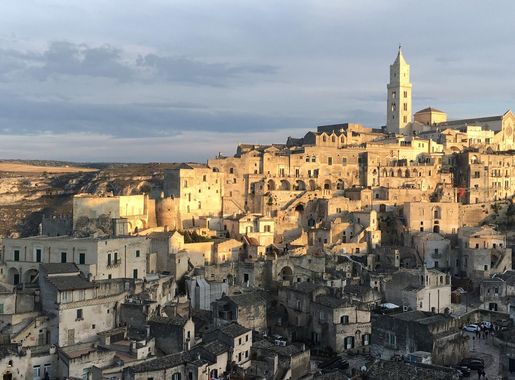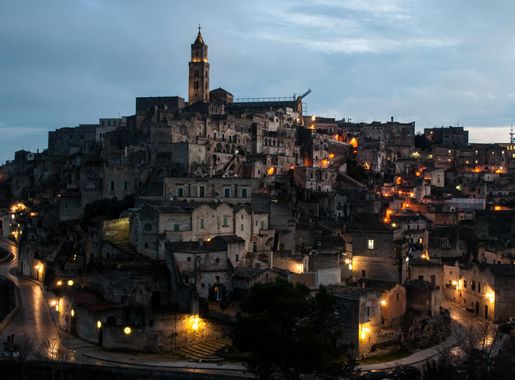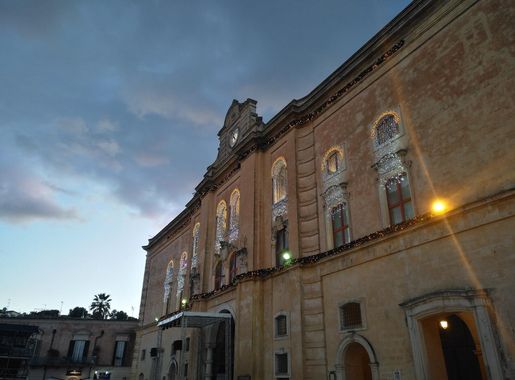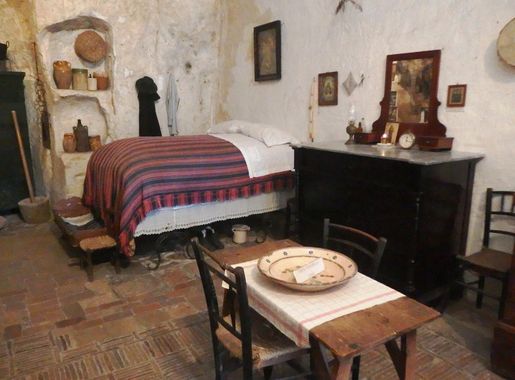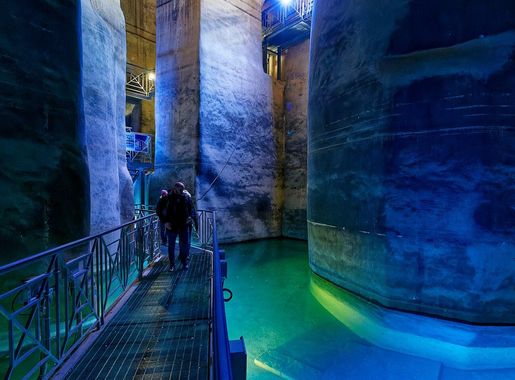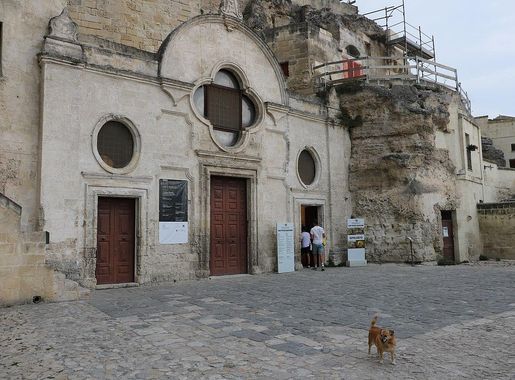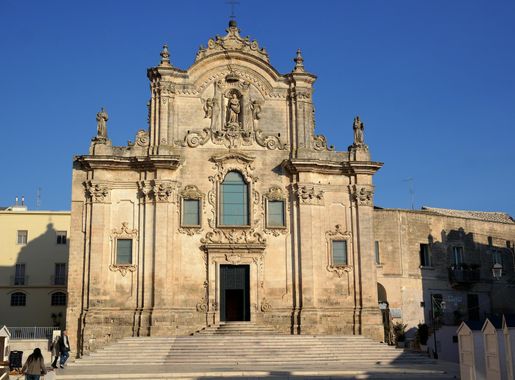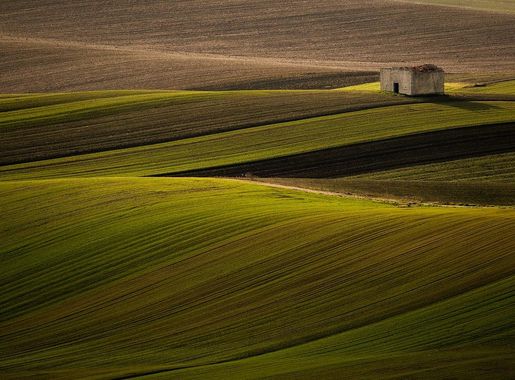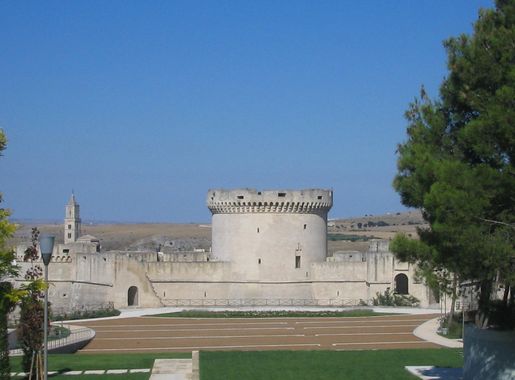
Civita in Matera: A Journey Through Time
Discover Civita in Matera, Italy: A Timeless Blend of Ancient Cave Dwellings, Rich Culture, and Stunning Landscapes.
Nestled in the heart of southern Italy, Civita in Matera offers a unique blend of history, culture, and breathtaking landscapes. Known for its ancient cave dwellings, or 'Sassi,' this neighborhood provides a glimpse into a bygone era. As you wander through the narrow, winding streets, you'll find a mix of charming stone houses and historic churches, each telling its own story. The Sassi di Matera, a UNESCO World Heritage site, is the highlight of Civita. These ancient cave dwellings have been inhabited since the Paleolithic period, making them some of the oldest human settlements in the world. Today, they house museums, boutique hotels, and cozy restaurants where you can savor traditional Basilicata cuisine. Beyond its historical allure, Civita in Matera is also a hub for artistic expression. Throughout the year, the neighborhood hosts various cultural events, including art exhibitions, music festivals, and theatrical performances. This vibrant cultural scene, set against the backdrop of ancient stone structures, creates a magical atmosphere that captivates every visitor.
Local tips in Civita
- Wear comfortable shoes; the streets are cobbled and steep.
- Visit the Matera Cathedral for panoramic views of the Sassi.
- Try the local bread, Pane di Matera, a must-try delicacy.
- Book guided tours in advance to explore the cave dwellings in depth.
- Check the local event calendar for festivals and cultural activities during your stay.
Civita in Matera: A Journey Through Time
Nestled in the heart of southern Italy, Civita in Matera offers a unique blend of history, culture, and breathtaking landscapes. Known for its ancient cave dwellings, or 'Sassi,' this neighborhood provides a glimpse into a bygone era. As you wander through the narrow, winding streets, you'll find a mix of charming stone houses and historic churches, each telling its own story. The Sassi di Matera, a UNESCO World Heritage site, is the highlight of Civita. These ancient cave dwellings have been inhabited since the Paleolithic period, making them some of the oldest human settlements in the world. Today, they house museums, boutique hotels, and cozy restaurants where you can savor traditional Basilicata cuisine. Beyond its historical allure, Civita in Matera is also a hub for artistic expression. Throughout the year, the neighborhood hosts various cultural events, including art exhibitions, music festivals, and theatrical performances. This vibrant cultural scene, set against the backdrop of ancient stone structures, creates a magical atmosphere that captivates every visitor.
Iconic landmarks you can’t miss
Sassi di Matera
Discover the ancient cave dwellings and stunning landscapes of Sassi di Matera, a UNESCO World Heritage site that tells the story of Italy's rich history.
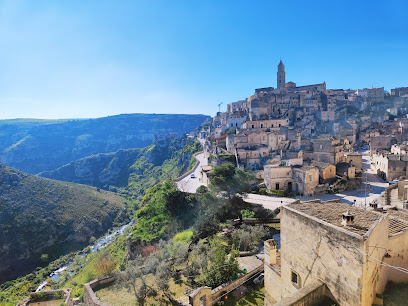
Casa Grotta nei Sassi di Matera
Explore the captivating Casa Grotta nei Sassi, an ancient cave dwelling in Matera that offers a glimpse into the rich history and culture of this UNESCO World Heritage site.
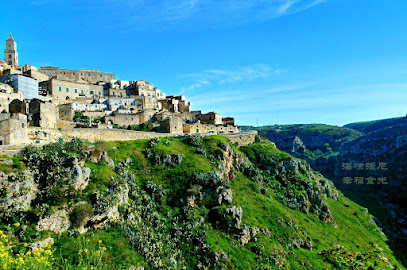
Sasso Caveoso
Discover Sasso Caveoso, a UNESCO World Heritage site in Matera, with its ancient cave dwellings and breathtaking views, perfect for history lovers.
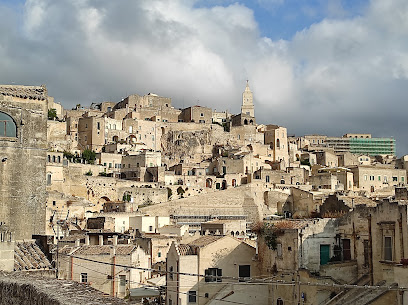
Sextantio Le Grotte Della Civita
Discover the enchanting Sextantio Le Grotte Della Civita, a unique cave hotel in Matera, Italy, where history meets luxury in stunning surroundings.
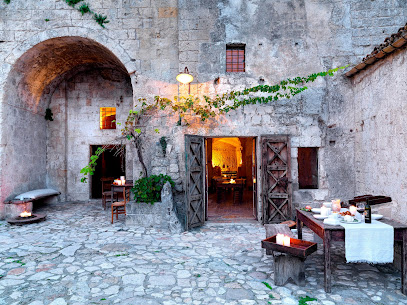
Ipogeo MateraSum
Explore the fascinating underground world of Ipogeo MateraSum, an archaeological museum revealing the ancient history of Matera, Italy.
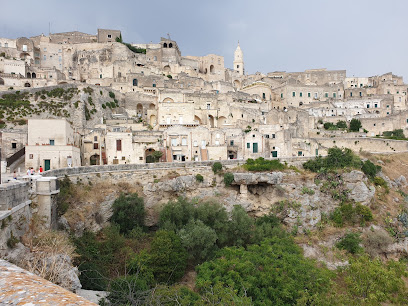
Casa grotta “C’era una volta...”
Explore the captivating history of Matera at Casa Grotta “C’era una volta...”, a museum that brings past cave dwellers' stories to life.

Complesso Rupestre Madonna delle Virtù e San Nicola dei Greci - Sassi
Explore the ancient rock churches of Complesso Rupestre Madonna delle Virtù e San Nicola dei Greci, a UNESCO World Heritage site in Matera, Italy.
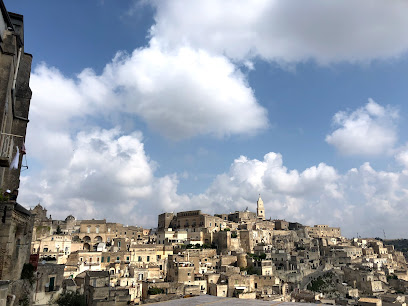
Casa Cisterna
Discover the captivating heritage of Casa Cisterna, a historical landmark in Matera, Italy, showcasing archaeological and ethnographic treasures.
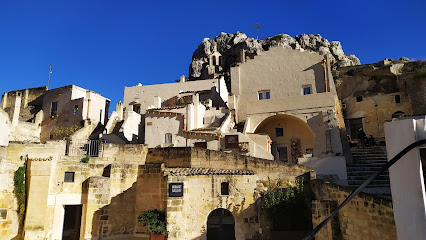
Antica Civita
Discover the authentic charm of Matera at Antica Civita, a cozy bed & breakfast where history meets modern comfort.
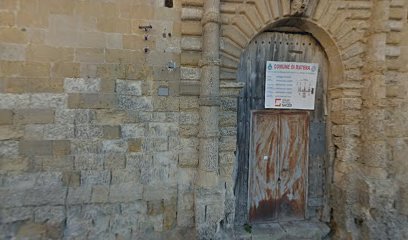
Piazza Duomo
Experience the vibrant atmosphere and historical charm of Piazza Duomo in Matera, a UNESCO World Heritage site, at the heart of Italy's stunning cave town.
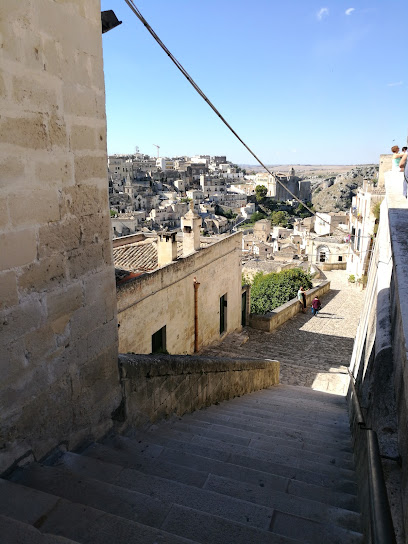
Piazza San Pietro Caveoso
Explore the stunning Piazza San Pietro Caveoso, a vibrant town square in Matera, rich in history, culture, and breathtaking views.

Piazza San Giovanni
Experience the vibrant heart of Matera at Piazza San Giovanni, a picturesque town square filled with history, culture, and delightful Italian cuisine.
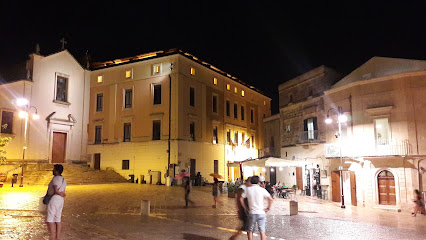
Unmissable attractions to see
Palombaro lungo
Explore the stunning Palombaro Lungo in Matera, a breathtaking underground reservoir that unveils the city's rich history and architectural marvels.
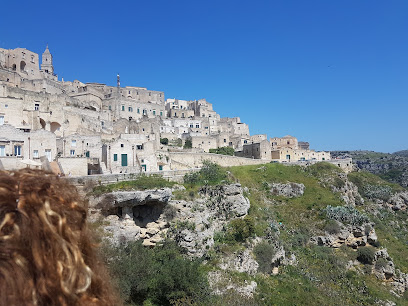
Parco Regionale della Murgia Materana
Explore the stunning landscapes and rich heritage of Parco Regionale della Murgia Materana, a haven for nature lovers and history enthusiasts.
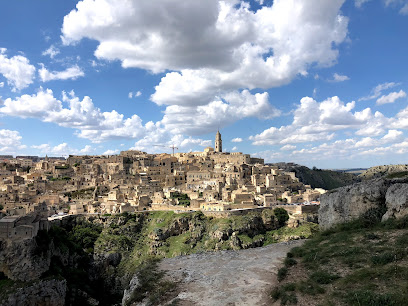
Cattedrale di Maria Santissima della Bruna e Sant'Eustachio
Explore the breathtaking Cattedrale di Maria Santissima della Bruna e Sant'Eustachio, a historic gem in Matera offering stunning architecture and panoramic views.

Complesso Rupestre San Giorgio - Matera
Discover the captivating history and stunning architecture of Complesso Rupestre San Giorgio, a UNESCO World Heritage Site in Matera, Italy.
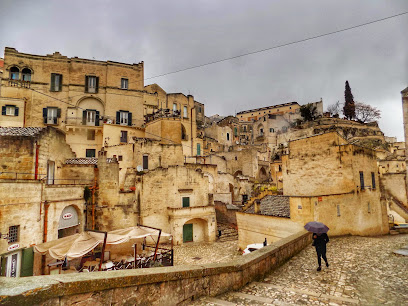
Essential places to dine
Trattoria del Caveoso
Experience authentic Italian cuisine at Trattoria del Caveoso in Matera, where every dish tells a story through its flavors and heritage.
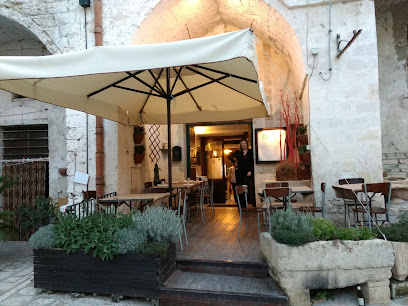
Ristorante Spaghetteria Miseria e Nobiltà Matera
Savor authentic Italian flavors at Ristorante Spaghetteria Miseria e Nobiltà in Matera – where every meal is a celebration of culinary artistry.
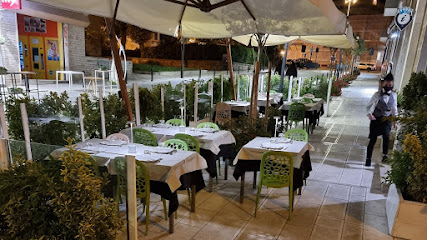
Giù a Sud | Bistrot nei Sassi
Experience authentic Italian cuisine at Giù a Sud in Matera's stunning Sassi district, where every dish tells a story.
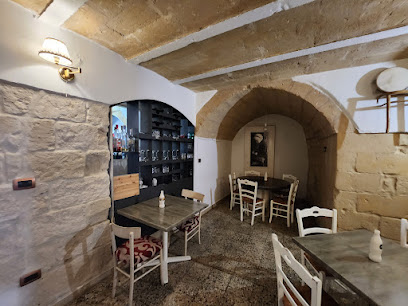
Osteria Pico
Discover Osteria Pico in Matera: A culinary haven where traditional Italian flavors meet warm hospitality amidst historic charm.
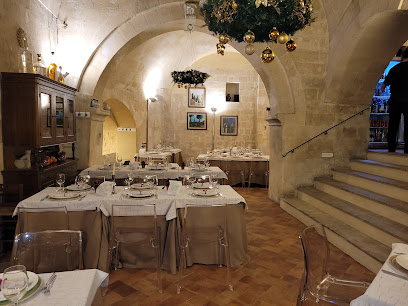
La Grotta Del Gusto
Experience authentic Italian flavors at La Grotta Del Gusto in Matera – where every dish tells a story.
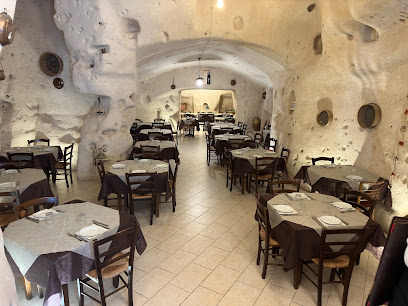
Osteria Belvedere al Vecchio Frantoio
Experience authentic Italian cuisine at Osteria Belvedere al Vecchio Frantoio in Matera – where local flavors meet warm hospitality.

Baccanti
Experience authentic Italian cuisine at Baccanti in Matera – where every dish tells a story and every meal is a celebration.
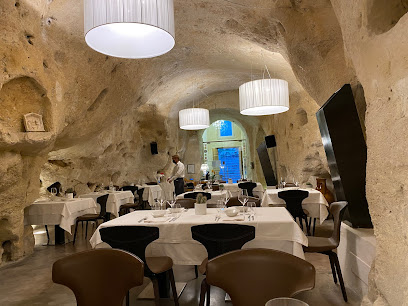
Ristorante Burro Salato - Cucina Francese e Lucana a Matera
Discover Ristorante Burro Salato in Matera for an unforgettable dining experience featuring exquisite French and Lucanian cuisine amidst historic charm.

Vicolo Cieco
Discover authentic Italian flavors at Vicolo Cieco in Matera – where every dish tells a story.
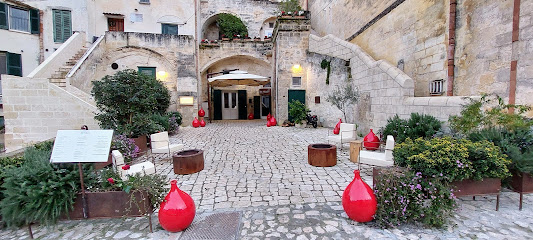
Regiacorte - L’eccellenza del Territorio
Experience authentic Italian cuisine at Regiacorte in Matera, where local flavors meet exceptional hospitality.
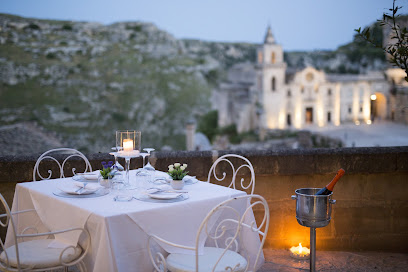
Markets, malls and hidden boutiques
Sassi in Miniatura
Explore the enchanting Sassi in Miniatura, a souvenir store offering beautifully crafted miniatures of Matera's iconic cave dwellings and local artisan goods.
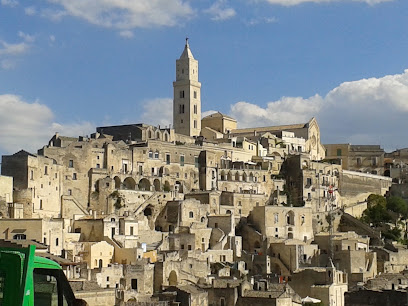
Lucia Nicastro Concept Store
Explore unique women's fashion at Lucia Nicastro Concept Store in Matera, where contemporary style meets local artisan craftsmanship.
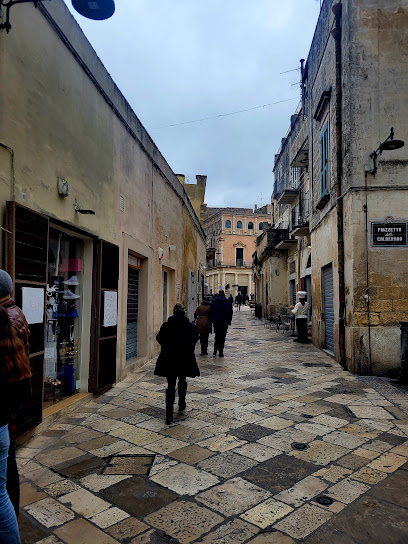
Unique Store Italy for Matera
Explore Unique Store Italy in Matera for authentic local crafts and souvenirs that capture the spirit of this historic city.
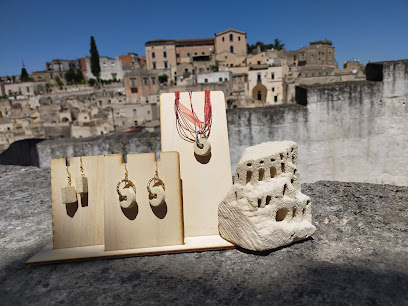
Il bugigattolo
Explore Il bugigattolo, Matera's charming souvenir store, offering unique handcrafted treasures that reflect the city's rich culture and artistry.
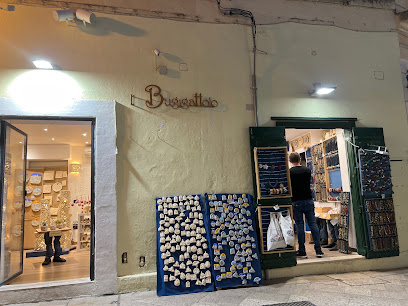
Maison Mizio Pour Femme
Discover chic women's fashion at Maison Mizio Pour Femme in the heart of Matera, where style meets comfort in a unique shopping experience.
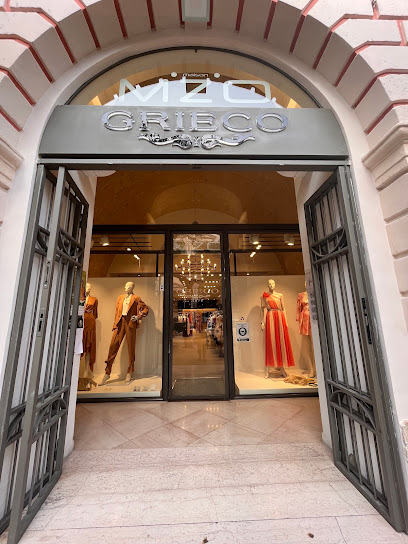
Piano B
Explore the charm of Matera through unique gifts and local artisan crafts at Piano B, your go-to gift shop in the heart of the city.
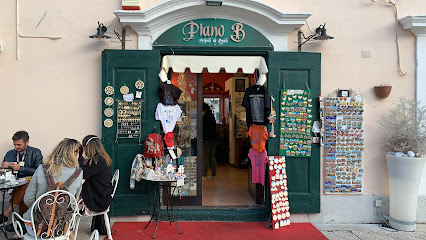
Des Boutique
Discover unique fashion at Des Boutique in Matera, where contemporary style meets local craftsmanship, perfect for every traveler’s wardrobe.
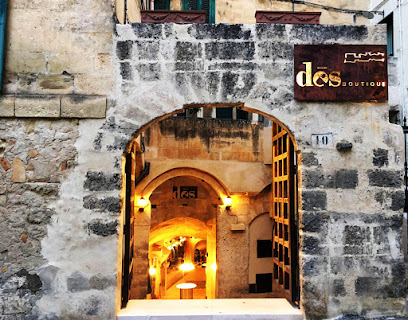
Boutique Bianca di Volpe Simona
Discover the elegance of Italian fashion at Boutique Bianca di Volpe Simona in Matera, where quality meets unique craftsmanship.
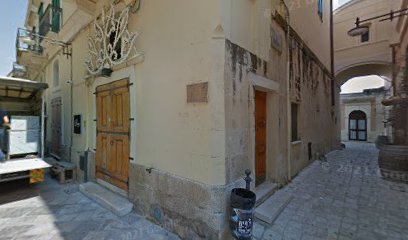
NEMO BOUTIQUE
Explore Nemo Boutique in Matera for unique women's fashion that blends local culture with contemporary style, perfect for every occasion.

Di Bitonto luxury shop
Discover the epitome of luxury and style at Di Bitonto Luxury Shop in Matera, where exquisite fashion accessories await every discerning traveler.
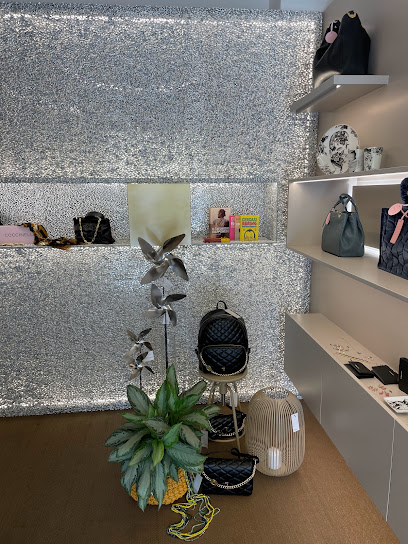
Essential bars & hidden hideouts
AREA 8
Discover AREA 8 in Matera, a cocktail bar and event venue offering exceptional drinks, delicious food, and a vibrant atmosphere for an unforgettable night out.
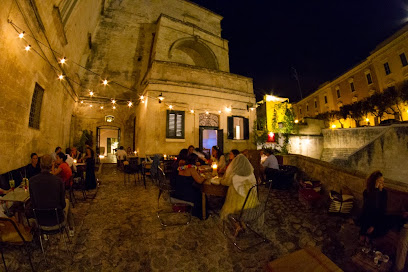
zipa cafè
Experience the charm of Matera at Zipa Cafè, a delightful bar offering local flavors and a cozy atmosphere perfect for unwinding.
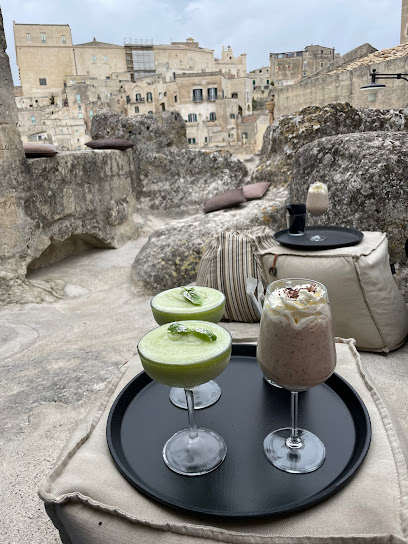
di bitonto caffè luxury shop
Experience luxury and exquisite flavors at Di Bitonto Caffè, a premier café in the heart of Matera, Italy.
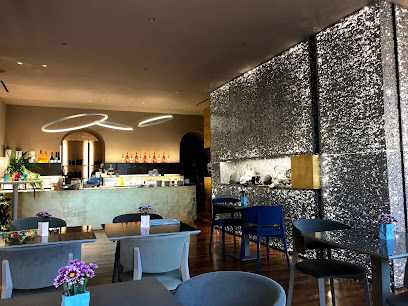
Vogue Bar Di Raucci Giuliano & C. S.A.S.
Discover Vogue Bar in Matera: a cozy retreat with delightful drinks and snacks, perfect for unwinding amidst the city's historic charm.
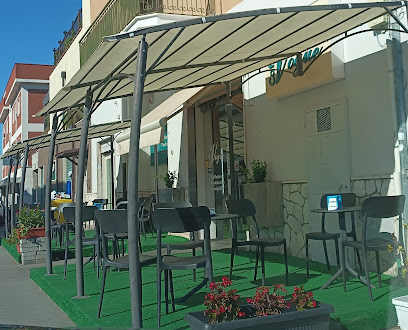
Pink Blue Bar
Experience the vibrant atmosphere and delightful drinks at Pink Blue Bar in Matera, a perfect retreat for travelers seeking relaxation and flavor.

The Boulevard
Discover the vibrant charm of The Boulevard in Matera, a cozy bar offering delightful drinks and local flavors at affordable prices.
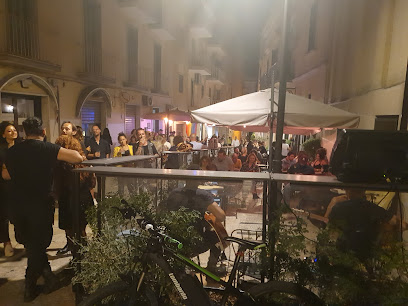
Shibuya
Discover the vibrant flavors of Southern Italy at Shibuya, where exquisite cocktails and small plates create an unforgettable dining experience.
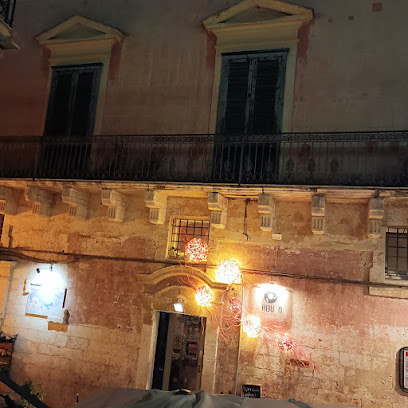
1806 Cocktail bar
Discover the art of cocktail crafting at 1806 Cocktail Bar in Matera, where modern mixology meets Italian tradition in a chic setting.
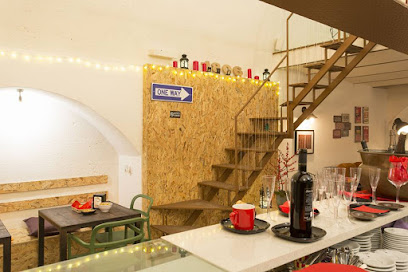
Wine & Coffee
Discover the rich flavors of Matera at Wine & Coffee, a charming bar renowned for its exquisite coffee and fine wines.
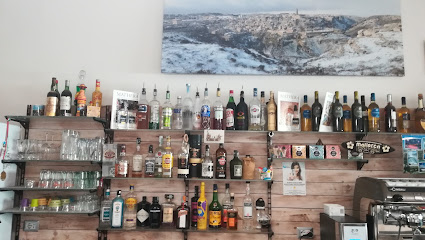
Terrazza StoneAge
Discover the unique ambiance of Terrazza StoneAge, where art meets cuisine in the heart of Matera, offering a true taste of Italian culture.
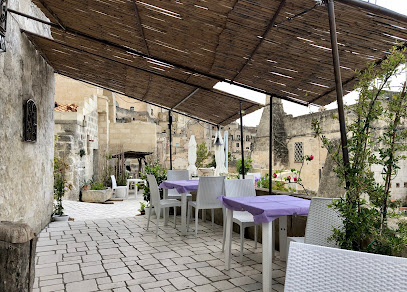
Local Phrases
-
- HelloCiao
[chow] - GoodbyeArrivederci
[ah-ree-veh-dehr-chee] - YesSì
[see] - NoNo
[noh] - Please/You're welcomePer favore/Prego
[pehr fah-voh-reh/preh-goh] - Thank youGrazie
[grah-tsyeh] - Excuse me/SorryScusa/Mi dispiace
[skoo-sah/mee dee-spyah-che] - How are you?Come stai?
[koh-meh stah-ee] - Fine. And you?Bene. E tu?
[beh-neh. eh too] - Do you speak English?Parli inglese?
[pahr-lee een-gleh-zeh] - I don't understandNon capisco
[nohn kah-pee-scoh]
- HelloCiao
-
- I'd like to see the menu, pleaseVorrei vedere il menù, per favore
[vohr-ray veh-deh-reh eel meh-noo, pehr fah-voh-reh] - I don't eat meatNon mangio carne
[nohn mahn-joh kahr-neh] - Cheers!Salute!
[sah-loo-teh] - I would like to pay, pleaseVorrei pagare, per favore
[vohr-ray pah-gah-reh, pehr fah-voh-reh]
- I'd like to see the menu, pleaseVorrei vedere il menù, per favore
-
- Help!Aiuto!
[ah-yoo-toh] - Go away!Vattene!
[vah-tteh-neh] - Call the Police!Chiama la polizia!
[kyah-mah lah poh-lee-tsya] - Call a doctor!Chiama un dottore!
[kyah-mah oon doht-toh-reh] - I'm lostMi sono perso
[mee soh-noh pehr-soh] - I'm illMi sento male
[mee sehn-toh mah-leh]
- Help!Aiuto!
-
- I'd like to buy...Vorrei comprare...
[vohr-ray kohm-prah-reh] - I'm just lookingSto solo guardando
[stoh soh-loh gwar-dahn-doh] - How much is it?Quanto costa?
[kwahn-toh kohs-tah] - That's too expensiveÈ troppo caro
[eh troh-poh kah-roh] - Can you lower the price?Puoi abbassare il prezzo?
[pwoh-ee ahb-bahs-sah-reh eel prehts-soh]
- I'd like to buy...Vorrei comprare...
-
- What time is it?Che ora è?
[keh oh-rah eh] - It's one o'clockÈ l'una
[eh loo-nah] - Half past (10)Le dieci e mezza
[leh dyeh-chee eh mehts-sah] - MorningMattina
[maht-tee-nah] - AfternoonPomeriggio
[poh-meh-ree-joh] - EveningSera
[seh-rah] - YesterdayIeri
[ee-eh-ree] - TodayOggi
[oh-jee] - TomorrowDomani
[doh-mah-nee] - 1Uno
[oo-noh] - 2Due
[dweh] - 3Tre
[treh] - 4Quattro
[kwah-ttroh] - 5Cinque
[cheen-kweh] - 6Sei
[seh-ee] - 7Sette
[seht-teh] - 8Otto
[oh-ttoh] - 9Nove
[noh-veh] - 10Dieci
[dyeh-chee]
- What time is it?Che ora è?
-
- Where's a/the...?Dov'è...?
[doh-veh] - What's the address?Qual è l'indirizzo?
[kwahl eh leen-dee-ree-tsoh] - Can you show me (on the map)?Puoi mostrarmi (sulla mappa)?
[pwoh-ee mohs-trahr-mee (sool-lah mahp-pah)] - When's the next (bus)?Quando passa il prossimo (autobus)?
[kwahn-doh pahs-sah eel prohs-see-moh (ow-toh-boos)] - A ticket (to ....)Un biglietto (per ....)
[oon bee-lyet-toh (pehr)]
- Where's a/the...?Dov'è...?
History of Civita
-
Civita, the oldest part of Matera, has roots that stretch back thousands of years, with archaeological evidence suggesting human habitation since the Paleolithic era. The area's unique rock formations provided natural shelters, leading to the establishment of some of the earliest communities in the region. The Sassi di Matera, a UNESCO World Heritage site, represents the evolution of these prehistoric settlements into a complex urban landscape.
-
During the Byzantine period, Civita became a significant religious center, with the establishment of numerous churches and monasteries. The rock-cut churches, adorned with Byzantine frescoes, showcase the blend of faith and artistry that characterized this era. By the Middle Ages, Civita was fortified, reflecting the need for protection amid the turbulent political landscape of southern Italy.
-
In the 16th century, as Matera expanded, Civita began to flourish as a socio-economic hub. The population grew, leading to the construction of new buildings and the development of trade routes. The Sassi became populated with cave dwellings (sassi) that were intricately carved into the limestone, representing a unique adaptation to the environment and a distinct architectural style that is still celebrated today.
-
Post-World War II, Civita, like much of Matera, faced significant challenges. The living conditions in the sassi were dire, leading to widespread abandonment. By the 1950s, the Italian government intervened, relocating residents and initiating a campaign to rehabilitate the area. This period marked a stark contrast to the earlier vibrancy of Civita, as it fell into neglect and decay.
-
In the late 20th century, efforts to restore Civita and the surrounding Sassi gained momentum, culminating in recognition as a UNESCO World Heritage site in 1993. This sparked a cultural renaissance, transforming Civita into a center for artists, filmmakers, and tourists. Today, the neighborhood is celebrated for its cultural heritage, hosting festivals, art exhibitions, and culinary events that honor its rich history while looking towards a sustainable future.
Civita Essentials
-
Civita is located in the heart of Matera, easily accessible from other neighborhoods such as Sasso Barisano and Sasso Caveoso. You can reach Civita on foot, as the city is compact, and walking is the best way to soak in the historical architecture. If you are coming from the Matera train station, it's about a 20-minute walk or you can take a local taxi for a quicker route.
-
Civita is best explored on foot due to its narrow, winding streets. There are no trains or buses that operate within the neighborhood itself. Bicycles can be rented from various shops in Matera if you wish to explore beyond Civita. Taxis are also available for trips to other parts of Matera or nearby attractions.
-
Civita is generally a safe area for tourists, with low crime rates. However, as in any tourist destination, it is advisable to remain vigilant. Avoid poorly lit streets at night and keep an eye on your belongings in crowded areas. While no specific high-crime areas exist, it is wise to stay cautious and be aware of your surroundings.
-
In case of emergencies, dial 112 for police, 118 for medical emergencies, and 115 for fire services. Local hospitals and medical clinics are available in Matera. It's recommended to have travel insurance that covers emergencies. Pharmacies can be found throughout the city for minor health concerns.
-
Fashion: Do wear comfortable shoes for walking on cobblestone streets, and dress modestly, especially when visiting religious sites. Religion: Do respect local customs; cover your shoulders and knees when entering churches. Public Transport: Do be polite and respectful; don't eat or drink on public transit. Greetings: Do greet locals with a friendly 'Buongiorno' or 'Buonasera'; don't be overly loud or disruptive. Eating & Drinking: Do savor local cuisine and accept food offers; don't waste food or be rude about the offerings.
-
To experience Civita like a local, visit the small artisan shops and local markets, where you can find handmade crafts and traditional foods. Engage with the local residents, who are often eager to share stories about the area's rich history. Don't miss the chance to try local specialties like 'pane di Matera' and 'caciocavallo' cheese. Join a local cooking class or food tour to delve deeper into the culinary traditions of the region.
Trending Landmarks in Civita
-
Sassi di Matera
-
Casa Grotta nei Sassi di Matera
-
Sasso Caveoso
-
Sextantio Le Grotte Della Civita
-
Ipogeo MateraSum
-
Casa grotta “C’era una volta...”
-
Complesso Rupestre Madonna delle Virtù e San Nicola dei Greci - Sassi
-
Casa Cisterna
-
Antica Civita
-
Piazza Duomo
-
Piazza San Pietro Caveoso
-
Piazza San Giovanni
Nearby Cities to Civita
-
Things To Do in Bari
-
Things To Do in Ravello
-
Things To Do in Amalfi
-
Things To Do in Pompeii
-
Things To Do in Positano
-
Things To Do in Sorrento
-
Things To Do in Herculaneum
-
Things To Do in Naples
-
Things To Do in Capri
-
Things To Do in Vlorë
-
Things To Do in Durres
-
Things To Do in Dubrovnik
-
Things To Do in Patos
-
Things To Do in Kavajë
-
Things To Do in Herceg Novi

